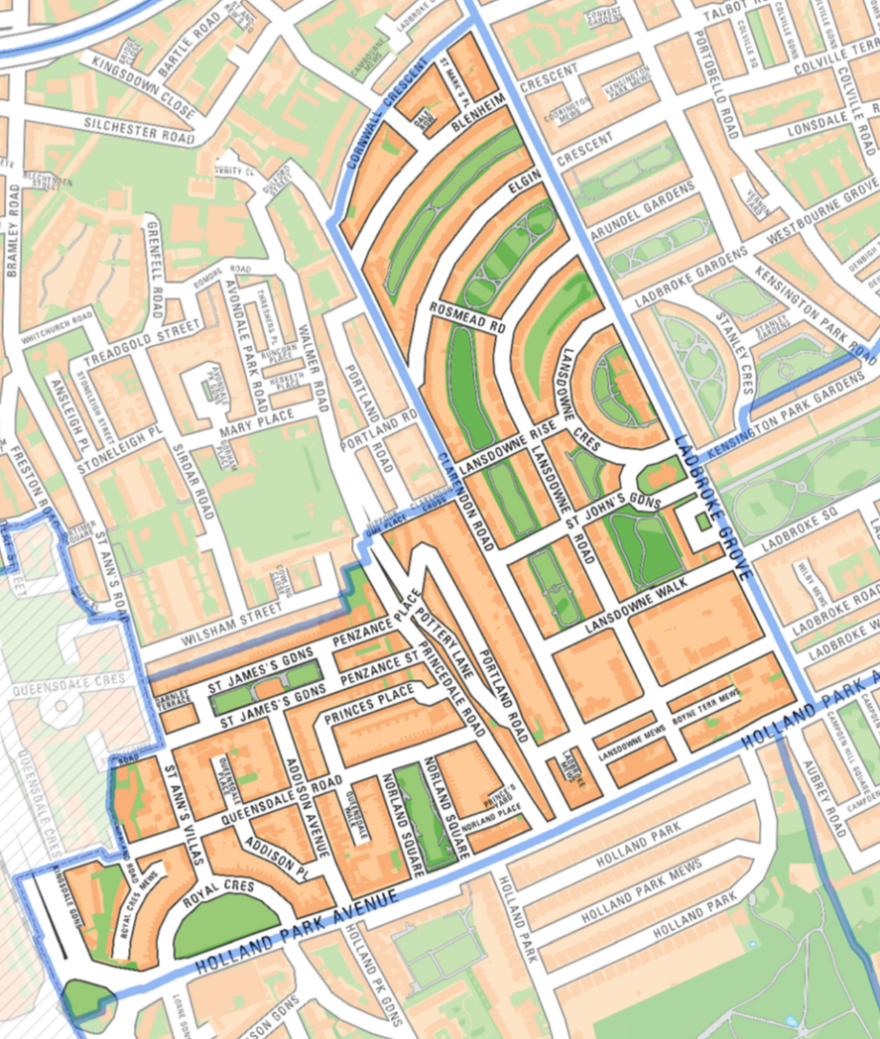It all started in the early 1800s when…
Norland ward was rural and home to pig farmers and potters, who made bricks and tiles out of the heavy clay dug in the area, until London's westward spread. In those days the Ladbroke family was Notting Hill's main landowner, and from the 1820s James Weller Ladbroke began to develop the Ladbroke Estate.
In 1837 the Hippodrome racecourse was laid out around the hill, with racegoers watching from the top. It was a disaster though, partly because a road ran through the course and also because of the heavy clay which made it waterlogged.
To change the fortunes of the area Ladbroke began working with architect and surveyor Thomas Allason to lay out streets and houses hoping to turn the area into a fashionable suburb of the capital. The Hippodrome closed in 1841 and houses were built in crescents following the circular racecourse tracks, two Norland ward ones being Blenheim Crescent and Elgin Crescent. Allason’s layout plan for the main part of the estate included the novel and beautiful creation of large private communal gardens, originally known as ‘pleasure grounds’, or ‘paddocks’ between the rows of houses.
Though the houses were large they didn’t lure the wealthiest Londoners Ladbroke hoped for. They preferred areas closer to the centre of London, like Mayfair and Belgravia. Instead, there was an influx of the upper middle class, professionals and writers, who could live here in houses much less expensive thank those in central London.
The ward’s reputation changed during the 20th century. As middle class households stopped employing servants the large Notting Hill houses lost their market and were increasingly split into multiple occupation. During the Blitz bombing a number of buildings were damaged or destroyed.
In the postwar period the name Notting Hill was synonymous with a down-at-heel area of cheap lodgings, epitomised by the racketeering landlord Peter Rachman who collected rent from overcrowded and badly maintained slums. In the 1950s Caribbean immigrants were drawn to the area partly because of the cheap rents, but were exploited by slum landlords like Rachman and they also became the target of white Teddy Boys, who were encouraged by the far-right White Defence League to keep Britain white, in the summer of 1958 Bramley Road race riots.
By the 1980s, single-occupation houses began to return to favour with families who could afford to occupy them, though the area was still down-at-heel and considered a dangerous place to visit by many. Today, after decades of gentrification, Notting Hill has a reputation as an affluent and fashionable area. Norland is characterised by restored stucco-fronted pillar-porched houses, some with communal gardens, and sweeping terraces like Royal Terrace. Because of the open spaces and stylish architecture Notting Hill’s Norland ward is now one of London's most desirable areas and remains one of most culturally vibrant and diverse parts of central London where many families have settled.
Since at least 2000, many independent shops and pubs in Norland ward have closed and been lost to private homes or to multinational chains. Despite that the area still has many wonderful independent specialist shops.
